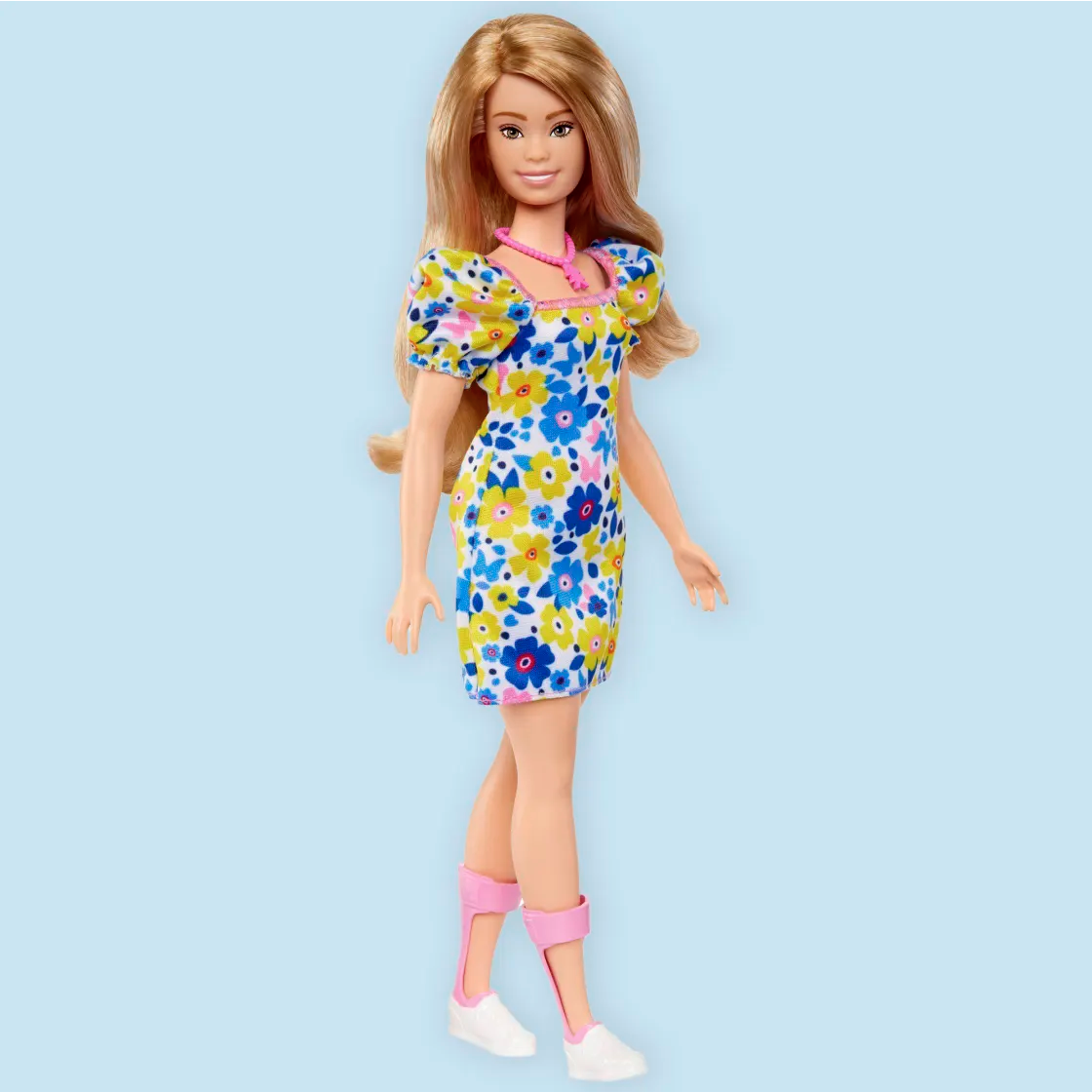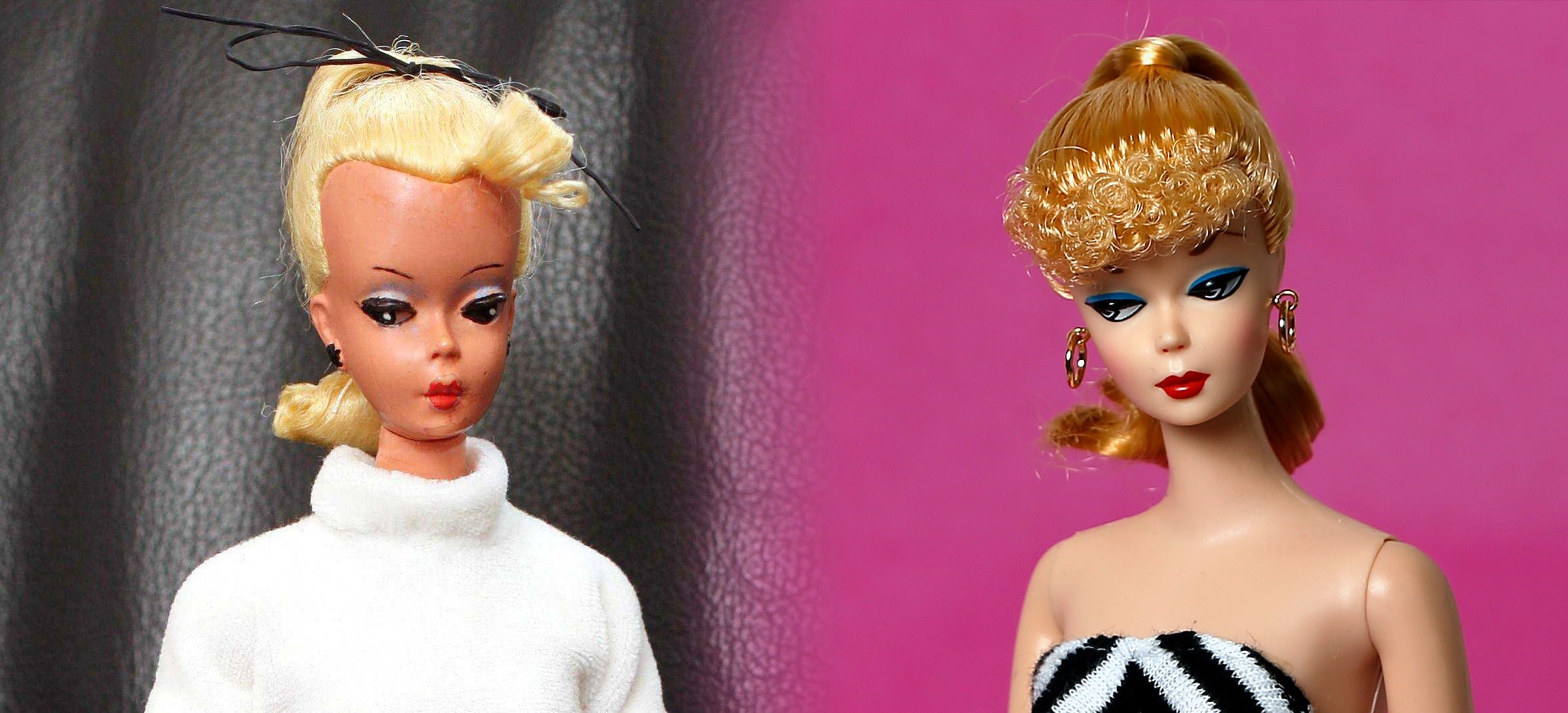Oh, You Beautiful Doll
Rick Rader, MD, Editor-in-chief, HELEN
Genny holding the new Barbie Doll with Down Syndrome from Mattel. Genny is from Chattanooga, TN. Photo credit: Dennis Wilkes.
“Oh, You Beautiful” was a ragtime love song published in 1911 with words by Seymour Brown and music by Nat D. Ayer.
The tune has been recorded hundreds of times by many artists from the first publication until recent times. It’s one of those earworm songs that you can’t get out of your head. For those neuro-minded readers of HELEN, this would be a perfect time to explain how this is the brain’s attempt to fill a gap in the auditory cortex, which is located in the temporal lobe. But this is about dolls not tunes.
Mattel introduced the first Barbie with Down Syndrome in 2023. Photo courtesy of Mattel.
Oh! you beautiful doll,
You great big beautiful doll!
Let me put my arms about you,
I could never live without you;
Oh! you beautiful doll,
You great big beautiful doll!
If you ever leave me how my heart will ache,
I want to hug you but I fear you'd break
Oh, oh, oh, oh,
Oh, you beautiful doll!
The lyrics serve as an explanation of the attraction of dolls to children (and adults).
According to archaeological evidence, dolls are the oldest known toys. There are documents that prove that dolls were used in ancient Egypt, Greece, and Rome. They were typically made from materials that were available like clay, stone, wood, bone, ivory, leather, or wax.
Dolls played a significant part in the developmental maturation of children, especially girls.
Ruth Handler bought the rights for a German fashion doll called the Bild Lilli Doll (left) and renamed her “Barbie” (right). Sipa/ AP Photo & Chesnot/ Getty Images
They learned to protect them, care for them, and ensure they behaved. Parents would often observe how their children would relate to their dolls for early indications of questionable emotional health. They were hugged, cuddled, thrown, pulled, squeezed, loved, scolded, and worn out. Most large cities even had doll hospitals where craftspeople would sew them, repair them, glue them, transplant eyes, apply new wigs, color their cheeks and lips to make sure they would be there for decades and often handed down to the next generation.
As dolls evolved, we saw the introduction of fashion dolls, which were dressed to represent current trends in fashion. The first fashion dolls were bisque dolls from French companies. They were the most popular from 1860 to 1890 and were designed to represent grown women and intended for children of wealthy families as toys.
Mattel launched the first black Barbie, “Francie” in 1967.
The modern American fashion doll movement started in 1959 when businesswoman Ruth Handler bought the rights for a German fashion doll called the Bild Lilli Doll and renamed her “Barbie.” Most doll trivia buffs are quick to add that Barbie’s real name is Barbara Millicent Roberts.
Writing in “Barbie Through the Ages” Brynn Holland explains how Barbie evolved with the times. “We saw Vintage Barbie, Mod Barbie, Malibu Barbie, Superstar Barbie and Black Barbie.”
With each decade, the doll came in new shapes in colors and got new shoes and new careers. In 1997, Mattel introduced Barbie’s friend Becky who used a wheelchair. In 2019, Barbie herself got a wheelchair and prosthetic limbs, showing how far the doll had come from its standard idealistic proportioned physique. And finally this year, it got additional chromosomes.
Two of the three Becky dolls released in the late 1990s.
Mattel gave Barbie a wheelchair in 2019.
In April, the Mattel Toy Company announced the debut of its first-ever Barbie with Down syndrome. According to the launch’s press release, the doll was “created to allow even more children to see themselves in Barbie, as well as have Barbie reflect the world around them.” It goes on to add that "The Barbie doll with Down syndrome is meant to inspire all children to tell more stories through play."
Nick Maslow, writing in People Magazine explains that Barbie worked in close partnership with the National Down Syndrome Society (NDSS) to make sure the doll as an accurate representation of someone living with Down syndrome:
“NDSS's guidance and real-world experiences informed the design process from start to finish, including the doll's sculpt, clothing, accessories and packaging. The close partnership ensured the Barbie team celebrated individuals with Down syndrome through a doll that would immediately connect with the community."
Dolls from the Barbie Fashionistas line. Photograph: Jason Tidwell/Mattel
"It was an honor working with Barbie on the Barbie doll with Down syndrome," said Kandi Pickard, the president and CEO of NDSS.. "This means so much for our community, who for the first time, can play with a Barbie doll that looks like them. This Barbie serves as a reminder that we should never underestimate the power of representation. It is a huge step forward for inclusion and a moment that we are celebrating."
Mattel says it found unique ways to make the doll's design symbolic for the Down syndrome community. The butterflies and yellow and blue colors in the dolls dress are symbols and colors associated with Down syndrome awareness. The doll’s pink necklace with three upwards chevrons represents the three copies of the 21st chromosome, the one associated with Down syndrome. Those chevrons are also a symbol for “the lucky few” in the Down syndrome community who have someone with Down syndrome in their life. Barbie wears pink ankle foot orthotics to represent the children with Down syndrome that use them for support.
As for Barbie's shape, Mattel explains that “this doll introduces a new face and body sculpt to be more illustrative of women with Down syndrome, including a shorter frame and a longer torso.The new face sculpt features a rounder shape, smaller ears, and a flat nasal bridge, while the eyes are slightly slanted in an almond shape. The doll's palms even include a single line, a characteristic often associated with those with Down syndrome."
In the same press release, Lisa McKnight, Mattel's executive vice president and global head of Barbie & Dolls, touched on the doll's potential global impact.
"Doll play outside of a child's own lived experience can teach understanding and build a greater sense of empathy, leading to a more accepting world…We are proud to introduce a Barbie doll with Down syndrome to better reflect the world around us and further our commitment to celebrating inclusion through play."
At my request, Mattel sent me a sample of Barbie (with Down syndrome) and it provided myself, my staff and some of our individuals with Down syndrome a great opportunity to share our reactions.
Several of our staff (clinicians and direct support professionals) did not think that the doll reflected the characteristics of the people with Down syndrome that they regularly interacted with. That could be argued for if you reference the CDC’s description of the features of people with Down syndrome.
A flattened face, especially the bridge of the nose
Almond-shaped eyes that slant up
A short neck
Small ears
A tongue that tends to stick out of the mouth
Tiny white spots on the iris (colored part) of the eye
Small hands and feet
A single line across the palm of the hand (palmar crease)
Small pinky fingers that sometimes curve toward the thumb
Poor muscle tone or loose joints
Shorter in height as children and adults
In my opinion, no single doll could reflect all of those features. Barbie with Down syndrome was never intended to be an anatomical teaching model but a reminder of the privilege of knowing, accepting, and including someone both different and identical to us. Descriptions of any syndrome are generalized profiles of a large group with shared characteristics and do not represent the individuality of any of its members. Not recognizing people with Trisomy 21 as being individuals accounts for negative and stigmatizing attitudes.
The teachers in our school program (no surprise) were less clinical (from the clinicians) in their response to the doll and more accepting of what Barbie (and Mattel and the NDSS) was trying to tell us about Barbie as a messenger.
But perhaps the most significant and memorable response was from Genny Bush.
Genny is a beautiful 35-year-old woman with Down syndrome who lives in northwest Georgia with her family. She is a multiple medal winning Special Olympics swimmer and track star who spends most of her days as a gardener.
Genny was presented with Barbie with no comments, introductions, or explanations other than, “Hey Genny, what do you think of Barbie?”
Her enthusiasm and approval were instantaneous. Genny’s smile was immediate and long lasting. Her singular comment was, in my opinion, what both Mattel and the National Down Syndrome Society had hoped for, “I love her, and I hope she loves me and I’m keeping her okay.”
One can assume that HELEN and BARBIE would have been great friends.
___________________________________________________________________
Side Bar:
“I never shoot for perfection or symmetry in doll making. It is our lovely flaws that make us each special.” Gayle Wray, Master Doll Maker







